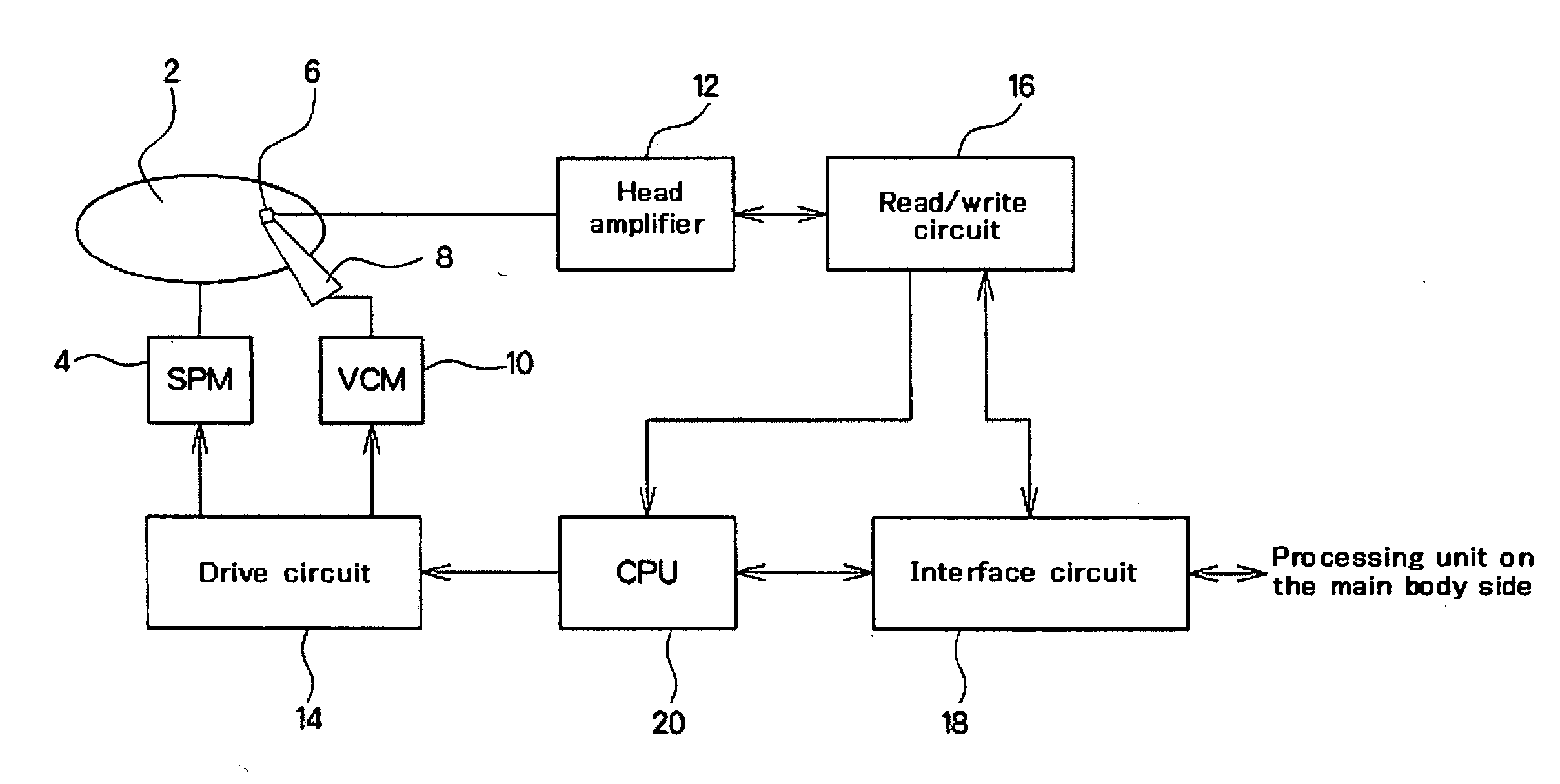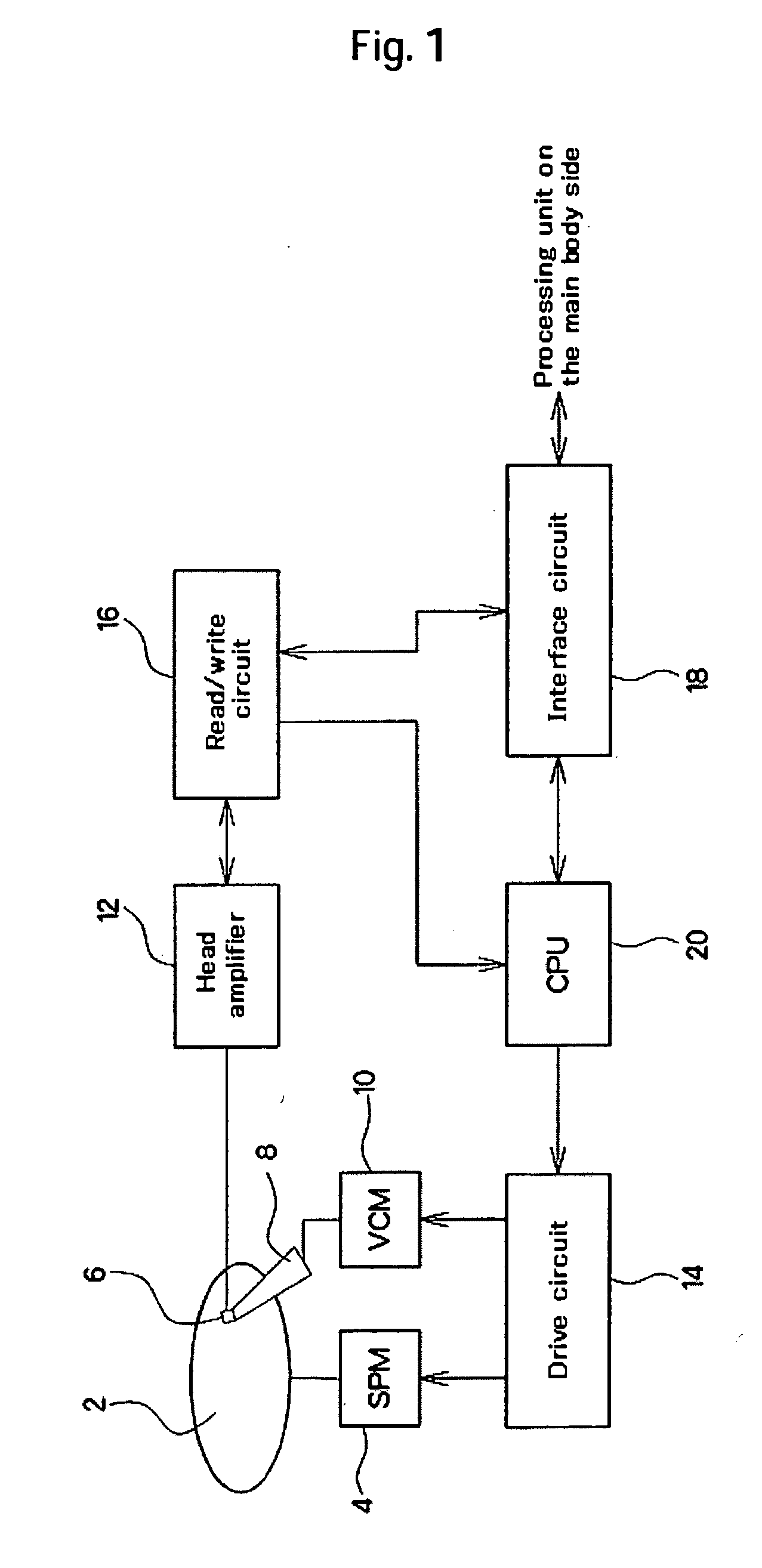Magnetic disk drive and magnetic disk medium
- Summary
- Abstract
- Description
- Claims
- Application Information
AI Technical Summary
Benefits of technology
Problems solved by technology
Method used
Image
Examples
Embodiment Construction
[0020] Embodiments according to the present invention (hereinafter referred to as “embodiments”) will be described with reference to the drawings as below.
[0021]FIG. 1 is a block diagram schematically illustrating a configuration of a magnetic disk drive according to this embodiment. The magnetic disk drive comprises a magnetic disk medium (disk) 2, a spindle motor (SPM) 4, a head element (head) 6, a head arm 8, a voice coil motor (VCM) 10, a head amplifier 12, a drive circuit 14, a read / write circuit 16, an interface circuit 18, and CPU 20. The magnetic disk drive is built into, for example, personal digital assistants and cellular phones. In addition, the magnetic disk drive is used to store and reproduce music data, video data, and the like.
[0022] Information is magnetically written on the disk 2 along a plurality of tracks that are concentrically formed on surfaces of the disk 2. Each track is partitioned into a plurality of servo sectors by means of servo data written beforeh...
PUM
 Login to View More
Login to View More Abstract
Description
Claims
Application Information
 Login to View More
Login to View More - R&D Engineer
- R&D Manager
- IP Professional
- Industry Leading Data Capabilities
- Powerful AI technology
- Patent DNA Extraction
Browse by: Latest US Patents, China's latest patents, Technical Efficacy Thesaurus, Application Domain, Technology Topic, Popular Technical Reports.
© 2024 PatSnap. All rights reserved.Legal|Privacy policy|Modern Slavery Act Transparency Statement|Sitemap|About US| Contact US: help@patsnap.com










